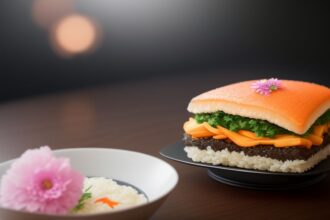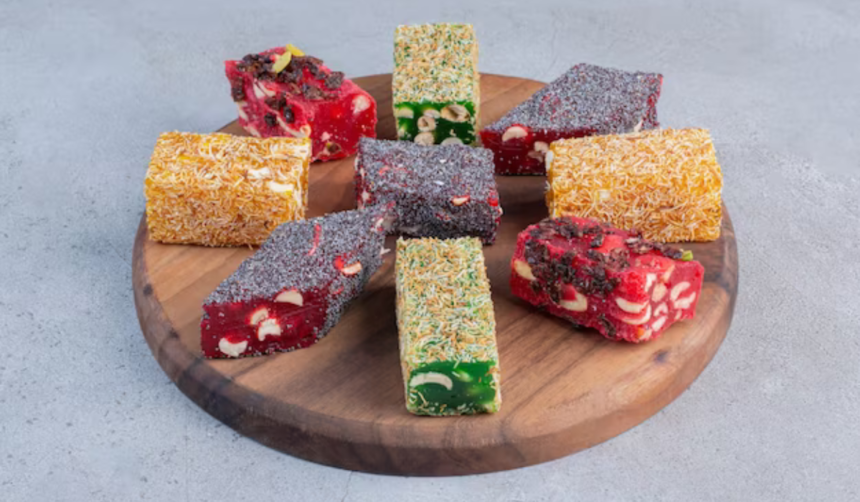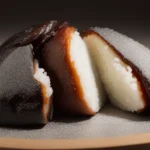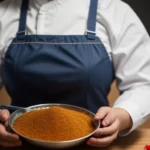Turkish Delights: A Guide to Authentic Turkish Cuisine
When it comes to Turkish cuisine, one of the most iconic and delicious treats that immediately comes to mind is Turkish Delights. These sweet, chewy, and fragrant treats have been enjoyed for centuries and are a staple in Turkish culture. In this article, we will explore the history of Turkish Delights, delve into the ingredients that make them so delicious, and provide a guide to experiencing authentic Turkish cuisine.
History of Turkish Delights
Turkish Delights, also known as lokum in Turkish, have a long and storied history that dates back to the Ottoman Empire. It is believed that these sweet treats were first created in the early 18th century by a Turkish confectioner named Haci Bekir. Bekir’s recipe for Turkish Delights quickly gained popularity among the Ottoman elite and soon became a favorite treat among the masses.
Over the years, Turkish Delights have evolved and now come in a wide variety of flavors and colors. In addition to the traditional rosewater flavor, you can find Turkish Delights flavored with fruits, nuts, and spices. Despite these modern variations, the basic recipe for Turkish Delights remains relatively unchanged and continues to be enjoyed by people all over the world.
Ingredients and Preparation
Traditional Turkish Delights are made using a few key ingredients that give them their signature texture and flavor. The main ingredients in Turkish Delights are sugar, cornstarch, and water, which are cooked together to create a thick, sticky syrup. This syrup is then flavored with rosewater or other flavorings before being poured into a tray and left to set.
Once the syrup has set, it is cut into small pieces and coated with a mixture of cornstarch and powdered sugar to prevent sticking. The end result is a sweet, chewy treat that is bursting with flavor and aroma. Turkish Delights are best enjoyed with a cup of Turkish tea or coffee and make for a perfect afternoon snack or dessert.
Varieties of Turkish Delights
Turkish Delights come in a wide variety of flavors and textures, making them a versatile and delicious treat. Some of the most popular flavors of Turkish Delights include rose, lemon, orange, mint, and pistachio. Additionally, you can find Turkish Delights with nuts, dried fruits, and spices added to them for extra flavor and texture.
In addition to traditional flavors, modern variations of Turkish Delights include chocolate-covered, coconut-covered, and honey-coated varieties. These contemporary twists on the classic treat have gained popularity in recent years and can be found in many Turkish sweet shops and markets.
Where to Find Authentic Turkish Delights
If you are looking to try authentic Turkish Delights, there are a few places where you can find them in their most traditional form. One of the best places to find Turkish Delights is at a Turkish sweet shop or market, where you can sample a wide variety of flavors and choose your favorites to take home.
You can also find Turkish Delights at specialty food stores and online retailers that specialize in Turkish cuisine. Many of these stores offer a wide selection of Turkish Delights in different flavors and packaging options, making it easy to try a variety of treats without having to travel to Turkey.

Authentic Turkish Delights in Istanbul
Istanbul, the cultural and culinary capital of Turkey, is home to some of the best Turkish Delights in the country. The city is filled with sweet shops and markets that sell a wide variety of Turkish Delights in traditional and modern flavors. Some of the best places to find authentic Turkish Delights in Istanbul include the Grand Bazaar, the Spice Bazaar, and the Kadikoy Market.
At these markets, you can sample a wide variety of Turkish Delights from different vendors and choose your favorites to take home as souvenirs. These markets also offer a unique shopping experience, where you can haggle with vendors and discover new flavors and treats that you may have never tried before.
Cooking Classes and Workshops
If you are a fan of Turkish cuisine and want to learn how to make Turkish Delights at home, there are cooking classes and workshops that specialize in teaching the art of Turkish confectionery. These classes are a fun and interactive way to learn about the history and culture of Turkish Delights while mastering the techniques needed to make them yourself.
Many cooking classes and workshops offer hands-on experience in making Turkish Delights from scratch, allowing you to experiment with different flavors and textures. These classes are taught by experienced chefs and confectioners who can guide you through the process and help you create delicious treats that you can enjoy with friends and family.
Health Benefits of Turkish Delights
Despite their reputation as a sweet and indulgent treat, Turkish Delights actually have several health benefits that make them a great choice for a snack or dessert. Turkish Delights are low in calories and fat, making them a healthier alternative to other sugary snacks and desserts. Additionally, Turkish Delights are gluten-free and can be enjoyed by people with gluten sensitivities or allergies.
Turkish Delights are also a good source of antioxidants, which help to protect the body from damage caused by free radicals. The rosewater flavoring in Turkish Delights is particularly rich in antioxidants, making it a healthy choice for those looking to boost their immune system and protect their cells from damage.
Pairing Turkish Delights with Turkish Tea
One of the best ways to enjoy Turkish Delights is to pair them with a cup of traditional Turkish tea. Turkish tea is a strong and aromatic black tea that is brewed using a special two-chambered teapot called a çaydanlik. The tea is typically served in small tulip-shaped glasses and is enjoyed throughout the day with snacks and meals.
When paired with Turkish Delights, the sweet and floral flavors of the tea complement the chewy and fragrant texture of the treats, creating a perfect balance of flavors and aromas. This classic combination is a favorite among Turkish people and is a must-try for anyone looking to experience authentic Turkish cuisine.
Turkish Delights as Gifts
Turkish Delights make for a unique and memorable gift for friends and family who appreciate exotic treats and flavors. These sweet treats are often packaged in decorative boxes or tins and can be found in a wide variety of shapes and sizes. Many Turkish Delights are also packaged in gift sets that include different flavors and textures, making them a perfect gift for special occasions.
If you are looking to give Turkish Delights as a gift, consider shopping at a Turkish sweet shop or market where you can find a wide selection of treats in different flavors and packaging options. You can also order Turkish Delights online from specialty retailers who offer a variety of gift sets and packaging options for any occasion.
Conclusion
Turkish Delights are a delicious and iconic treat that has been enjoyed for centuries in Turkey and around the world. These sweet, chewy treats are made using a few key ingredients and are bursting with flavor and aroma. Whether you are a fan of traditional rosewater-flavored Turkish Delights or prefer modern variations with nuts and spices, there is a flavor for everyone to enjoy.
If you are looking to experience authentic Turkish cuisine, be sure to try Turkish Delights paired with Turkish tea for a classic and delicious treat. Whether you purchase them from a markets in Istanbul or make them at home in a cooking class, Turkish Delights are a versatile and indulgent treat that is sure to delight your tastebuds.
FAQs about “Turkish Delights: A Guide to Authentic Turkish Cuisine”
- What makes “Turkish Delights: A Guide to Authentic Turkish Cuisine” a must-read for food enthusiasts? This book offers a comprehensive guide to authentic Turkish cuisine, providing insights into the diverse flavors, ingredients, and culinary traditions that define Turkish gastronomy.
- Which aspects of Turkish cuisine are covered in this guide? “Turkish Delights” covers a wide range of aspects of Turkish cuisine, including regional specialties, staple ingredients, essential cooking techniques, and the cultural significance of food in Turkish society.
- Are specific Turkish dishes and ingredients featured in this guide? Yes, this guide features a curated selection of Turkish dishes and ingredients, ranging from classic mezes like hummus and dolma to hearty mains like kebabs and pilafs. Each dish is accompanied by stories and anecdotes that add depth to the culinary journey.
- How does this guide celebrate the cultural and culinary diversity of Turkey? This guide celebrates the cultural and culinary diversity of Turkey by exploring the rich tapestry of flavors, influences, and traditions that shape Turkish cuisine. It highlights the culinary heritage of various regions, from the Aegean coast to the Anatolian heartland.
- Can readers expect to find practical advice for cooking Turkish dishes at home in this guide? Absolutely! “Turkish Delights” offers practical advice, cooking tips, and recipe ideas for preparing authentic Turkish dishes at home. Whether you’re a novice cook or a seasoned chef, this guide provides everything you need to embark on a flavorful journey through Turkish cuisine.
Advantages:
- Engaging Title: The title “Turkish Delights: A Guide to Authentic Turkish Cuisine” is captivating and immediately draws attention, evoking images of exotic flavors and culinary experiences.
- Educational Value: By positioning itself as a guide, the title offers readers valuable insights into authentic Turkish cuisine, providing information about traditional dishes, cooking techniques, and cultural influences.
- Cultural Exploration: The title encourages readers to explore the rich culinary heritage of Turkey, fostering a deeper appreciation for the diverse flavors, ingredients, and regional specialties found in Turkish cuisine.
- Practicality: As a guide, the title serves a practical purpose for readers interested in exploring Turkish cuisine, offering them valuable recommendations and tips for cooking authentic Turkish dishes at home or dining out at Turkish restaurants.
- Inspiration for Cooking and Dining: The title may inspire readers to experiment with Turkish recipes in their own kitchens or to seek out Turkish restaurants to sample authentic dishes, encouraging culinary exploration and appreciation of Turkish gastronomy.
Disadvantages:
- Cultural Appropriation Concerns: Without proper context and understanding, promoting Turkish cuisine may risk perpetuating stereotypes or appropriating Turkish culinary traditions without acknowledging their significance or respecting their origins.
- Oversimplified Focus: While the title emphasizes authentic Turkish cuisine, it may oversimplify the complexity of Turkish culinary traditions and overlook regional variations and specialties, potentially limiting the depth of the discussion.
- Limited Scope: The title may not cover every aspect of Turkish cuisine in depth, potentially leaving out certain dishes or culinary traditions that could provide a more comprehensive understanding.
- Accessibility: Some ingredients used in authentic Turkish cuisine may be difficult to find outside of Turkey or major culinary hubs, limiting the practicality of exploring Turkish cuisine for readers in other regions.
- Audience Engagement: While the title appeals to readers interested in culinary exploration and Turkish cuisine, it may not attract those seeking a more focused or specialized discussion of specific Turkish dishes or culinary topics.
















